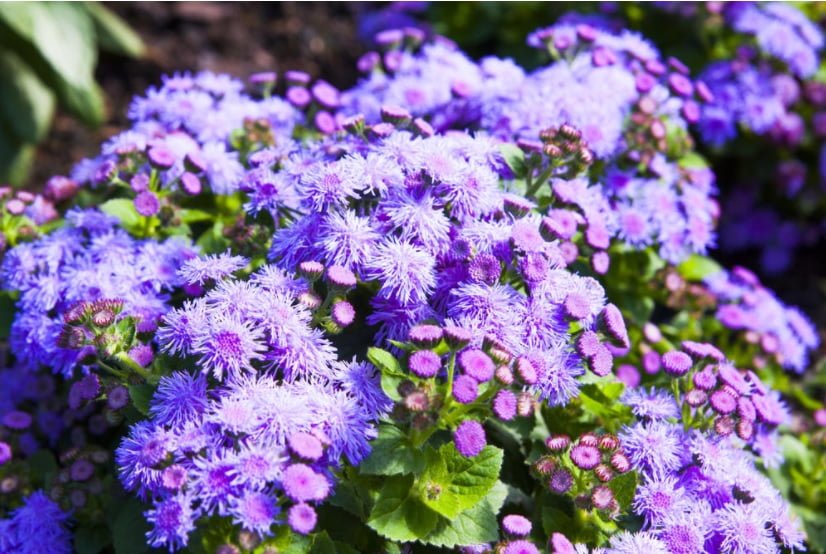
If you are looking for a plant that would bloom in your garden for as long as possible – choose ageratum. Probably many of you know this flower: a blue or purple cap invariably decorates flower beds with annuals both in gardens and in city parks and on the streets. Let’s get to know this plant better.
Meet: ageratum
It belongs to the genus of the Asteraceae family and has about 60 species, all of them grow in Central and South America in a tropical climate, so the plants are thermophilic. Among them there are annual and perennial grasses and even small shrubs.
We all know the flower Ageratum Houston, or Mexican (Ageratum houstonianum). In its wild form, it is found in areas from Mexico to Peru, forms sprawling branching bushes about 50 cm (1.6 ft) high, covered with slightly rounded serrated leaves sitting opposite. Its flowers are very small, tubular, like all compound flowers, collected in inflorescences — small baskets, many of which form flaps. Thus, a complex inflorescence is obtained, consisting of fluffy blue, lilac, white beads.
This fluffiness and special aroma are given to the plant by the stigmas of the flower pistils, which are almost twice as long as the flower and protrude strongly above it. Such inflorescences are formed at the ends of all the numerous branches of the bush, and in general the whole plant is covered with flowers that look like fluffy blue balls – it looks very cute and beautiful.

Blooms profusely and for a long time — from June until the first frost. It is not surprising that its name ageratum comes from the Greek word ageratos, which means ageless. In September, the plant is not able to ripen with seeds.
Growing of ageratum
Ageratum can be propagated by seeds and cuttings, but the second method is usually used in industrial gardening. Amateurs for their garden usually grow a plant from seeds through seedlings.
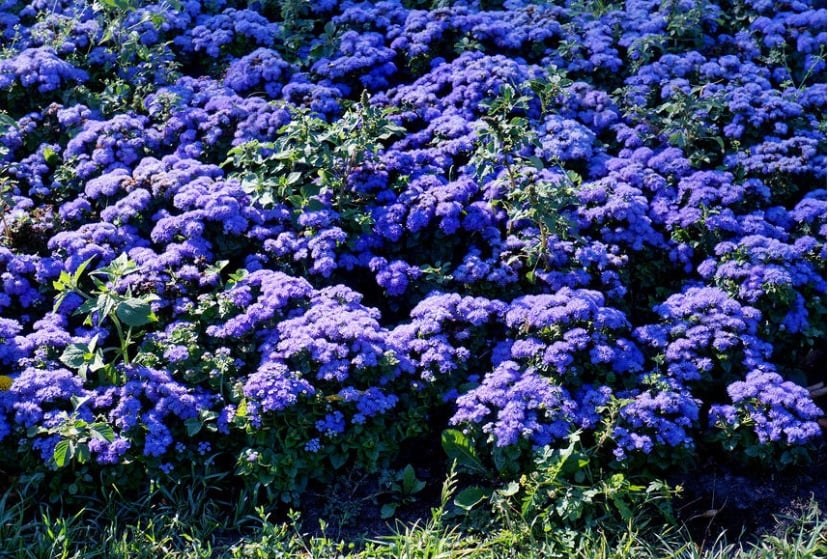
Seeds should be sown at the end of March – April in small boxes with loose and fertile land. Cover the container with crops with cling film and leave in a warm place near the battery. In this case, you do not need to water, just ventilate daily.
How to grow seedlings
Shoots may appear in two weeks, then the film is removed and, if necessary, very carefully watered. As soon as the plants have 2 rounded leaves, they are planted in boxes or cassettes for seedlings. Further care is reduced to careful watering, since ageratum does not like dampness.
Before planting in the ground, it is advisable to temper the seedlings so that it becomes airy. I put all my seedlings in April on a glazed loggia, where there is a lot of light and a favorable temperature – the days are warm and the nights are cool.
When and where to land
For the ageratum, it is necessary to choose a place with sunlight. He likes the soil with nutrients and light, neutral. It is not necessary to plant it in not too fertile soil, because it will develop a lot of greenery and will bloom poorly. Also not suitable for poor, rocky or moist acidic soils.

Since ageratum is thermophilic, it should be planted in the ground only when the spring frosts are over. The ground is carefully loosened and seedlings are planted at a distance of 15-20 cm (5.9-7.9 in) from each other. Ageratum blooms 60-70 days after germination of seeds.
How to care
After planting seedlings in the ground, young plants should be watered regularly and immediately loosened. In the future, the ageratum requires abundant watering, but not very often. To make the flower garden look well-groomed and neat, withered inflorescences should be regularly removed. And when the bushes are already too old, you can go and prune: then the shoots grow quickly and abundant flowering lasts until the first frost.
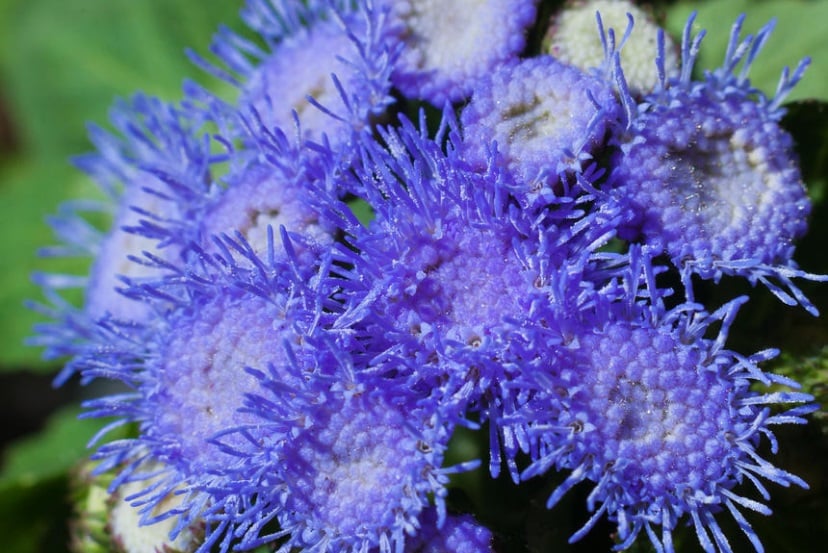
Also, fertilizing will not interfere with ageratum plants – 2-3 times a season they can be fed with a complex fertilizer.
Wintering and cuttings
The peculiarity of any variety is that it needs to be preserved until spring. The bush is dug out, transplanted into a pot, trimmed and placed in a bright, cool place. Watered moderately. In spring, the bush begins to grow, and in March-April, you can take cuttings and root at a temperature of +20-22 °C (68-71.6°F). They take root easily and give excellent shoots.
Varieties of ageratum
Breeders have selected many varieties of ageratum, they differ in the timing of flowering, the height of the bushes and the color of the flowers. There are varieties of medium height (30 cm/11.8 in) and dwarf (15 cm/5.9 in). The most common are the following:
- Alba is a spherical shrub, up to 20 cm(7.9 in) tall. Inflorescences are white.
- Blaue Kappe is a compact shrub, 20-30 cm (7.9-11.8 in) tall. Inflorescences are loose, medium-sized, 5-6 cm(2-2.4 in) in diameter, lilac-blue.
- Blue ball is a low bush – up to 18 cm(7 in), almost spherical. Inflorescences are large 1.5-1.7 cm (0.6-0.7 in) in diameter, stigmas are long, dark lilac-blue.
- Blue perfection is a compact bush, highly branched, 25-30 cm (9.8-11.8 in) high. Baskets 1.5-1.7 cm (0.6-0.7 in) in diameter, lilac-blue.
- Little Dorrit — low bushes, 15-20 cm(5.9-7.9 in) tall. Baskets 0.8-1.3 cm(0.3-0.5 in) in diameter, light blue.
- Fairy Pink is a compact shrub 20-30 cm(7.9-11.8 in) high. Inflorescences are sluggish, dark pink, buds are bright purple with a diameter of 4-5 cm(1.6-2 in).

Now there are many F1 hybrids, the value of which lies in faster growth, the formation of plants uniform in height, blooming more abundantly and for a long time than simple varieties.
Of particular interest are the following: Adriatic – blue; Atlantic – violet-blue flowers; The ocean is light blue, the purple fields are purple.
Ageratum in the garden
Ageratum will decorate any flower bed or border, will be placed successfully along the path or on the edge of the flower garden and will look great in pots with taller flowers.
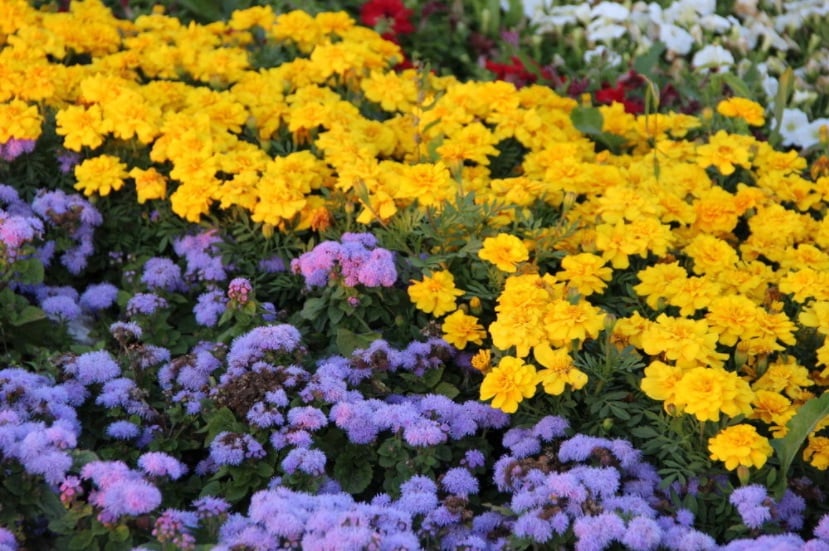
Blue shades of ageratums will create beautiful compositions with yellow-orange colors: tagetes, calendula, helia, heliopsis.
Do you grow ageratum in your garden? Tell us about your combinations of ageratum with other plants.
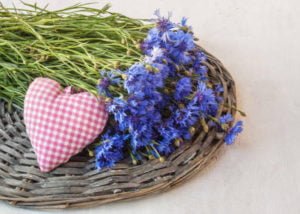
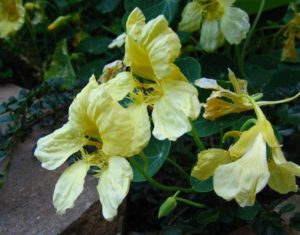
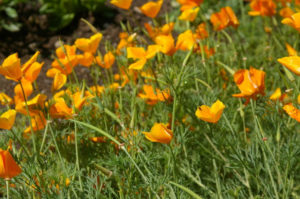
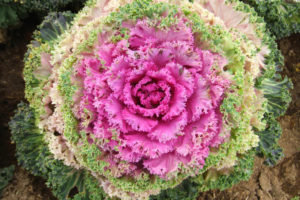
Leave a Reply